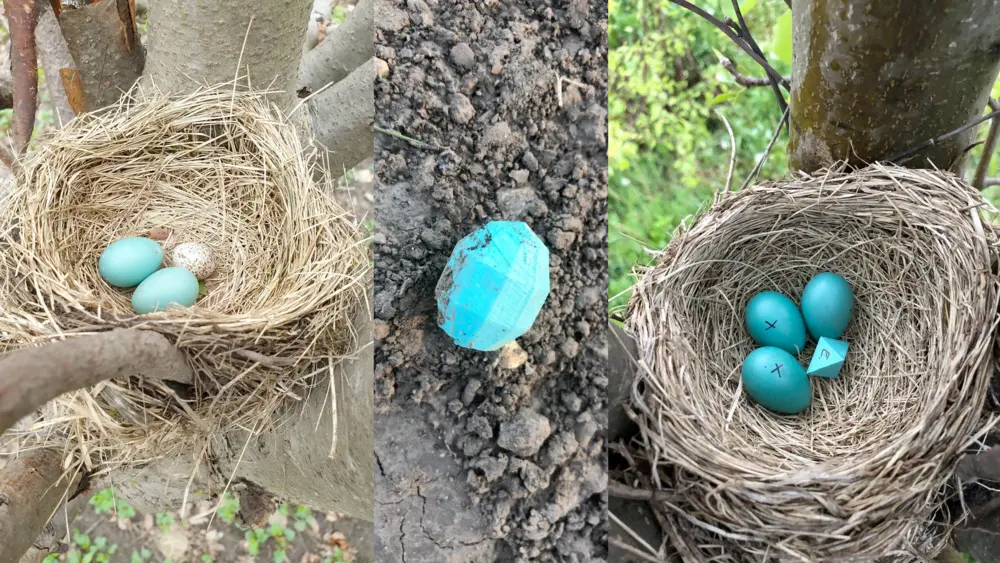
The answer: Evolutionary biologists were gauging how birds decide what belongs in their nests, and what is an invasive piece of detritus that they need to throw out.
Thanks to the results of this study, published Wednesday in Royal Society Open Science, we now know what the robins thought of the eggs, which were made of plastic and had been 3-D printed by the lab of Mark Hauber, a professor of animal behavior at the University of Illinois, Urbana-Champaign and a fellow at Hanse-Wissenschaftskolleg in Delmenhorst, Germany.
He and his colleagues reported that the thinner the fake eggs got, the more likely the birds were to remove them from the nest. But curiously, the robins were more cautious about throwing out the pointy objects like that eight-sided die, which were closer in width to their own eggs. Birds, the results suggest, are using rules of thumb that are not intuitive to humans when they decide what is detritus and what is precious cargo.